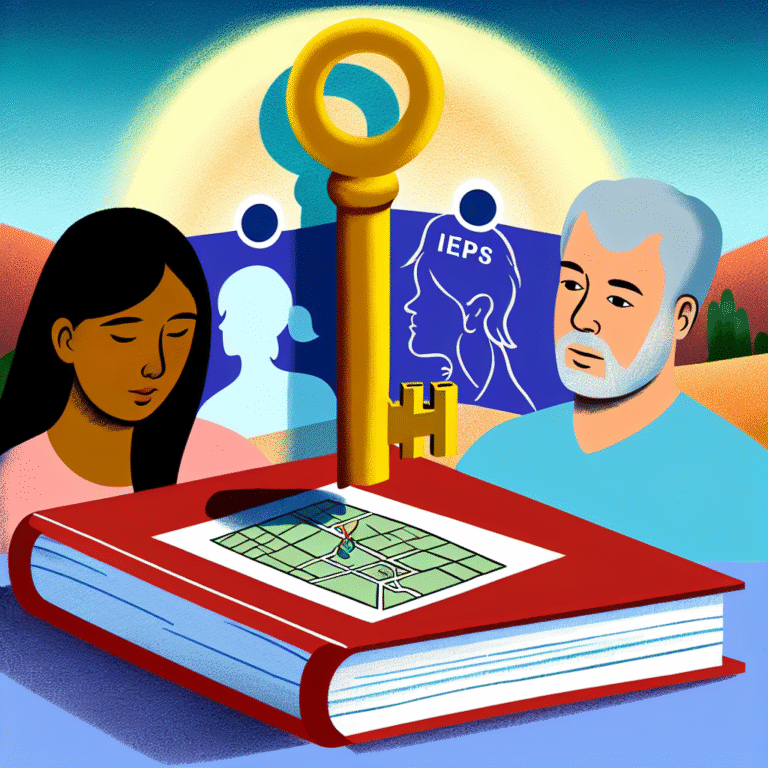
Introduction: A New Dawn in Rehabilitation
In the shadows of our justice system, the struggle for reform continues to gain momentum. The conventional methods of incarceration rarely address the root causes of criminal behavior, leading to a staggering recidivism rate. According to the Bureau of Justice Statistics, nearly 68% of released prisoners are arrested once again within three years. Hence, the urgent call to action centers around "Breaking the Cycle: Innovative Approaches to Offender Rehabilitation." This transformative moment allows us to rethink, reshape, and ultimately redefine how we approach rehabilitation.
Understanding the Challenge of Recidivism
The Cost of Inaction
The societal and economic implications of high recidivism rates are profound. Each re-offense perpetuates a cycle of incarceration, costing taxpayers billions of dollars annually. Combined with the emotional toll on families and communities, it becomes clear that breaking the cycle is not just a moral imperative but a critical agenda item for society as a whole.
Factors Contributing to Recidivism
- Mental Health Issues: Many offenders suffer from undiagnosed mental health disorders.
- Substance Abuse: Addiction is a prevalent issue that often leads to criminal behavior.
- Lack of Skills: Many individuals exit the prison system without employable skills, making reintegration challenging.
- Social Stigma: The stigma surrounding ex-offenders often results in rejection from society, pushing them back into crime.
Innovative Approaches to Rehabilitation
1. Restorative Justice
Understanding Restorative Justice
Restorative justice is a paradigm shift in how society addresses crime. Instead of punishment, it focuses on repairing the harm done. By involving victims in the healing process, restorative justice fosters accountability and understanding among all parties involved.
Case Study: The Newark Community Street Team
The Newark Community Street Team has been lauded for its success in reducing violence and recidivism rates in New Jersey. This program engages former offenders in community-building activities, thereby helping individuals reconnect with their communities and fostering emotional healing.
Analysis: The Newark Community Street Team illustrates how restorative justice models can divert potential re-offenders from a path of crime through community engagement and accountability.
2. Cognitive Behavioral Therapy (CBT)
Effectiveness of CBT in Rehabilitation
Cognitive Behavioral Therapy is becoming a cornerstone in offender rehabilitation due to its focus on altering the thought patterns that contribute to criminal behavior. CBT helps offenders discover healthier coping mechanisms and realistic problem-solving strategies.
Case Study: The Missouri Department of Corrections
The Missouri Department of Corrections implemented a CBT program for incarcerated individuals struggling with substance abuse and emotional issues. Results showed a 30% reduction in recidivism rates among participants.
Analysis: The successful implementation of CBT highlights the power of mental strategies in changing criminal thought patterns and behaviors.
3. Vocational Training Programs
Bridging the Gap to Employment
Rehabilitation doesn’t stop at psychological treatment. Providing offenders with vocational training can significantly reduce recidivism. Developing marketable skills enables them to secure stable employment after incarceration, which is crucial for reintegration into society.
Case Study: The Fortune Society
The Fortune Society in New York provides job training and placement services for individuals released from incarceration. Through partnerships with various local businesses, they help connect offender graduates to employment opportunities.
Analysis: The Fortune Society exemplifies the importance of vocational training as a crucial element of rehabilitation that addresses one of the root causes of recidivism—lack of employment.
4. Peer Support Programs
The Power of Shared Experience
In peer support programs, former inmates serve as mentors to those currently incarcerated or newly released. This approach taps into shared experiences, fostering trust and understanding.
Case Study: InsideOut
The InsideOut program invites people from the outside community to engage with incarcerated individuals, focusing on shared humanity and experiences. This dialogue helps build empathy and dismantles the barriers between ex-offenders and society.
Analysis: Programs like InsideOut often lead to breakthroughs in how individuals perceive their self-worth and potential, which is critical in breaking the cycle of recidivism.
5. Holistic Approaches
Addressing the Whole Person
Holistic rehabilitation tackles all aspects of an individual’s life—mental health, physical health, social skills, and vocational readiness. Programs that treat the whole person rather than focusing solely on criminal behavior report better outcomes.
Case Study: The Delancey Street Foundation
The Delancey Street Foundation in San Francisco operates a rehabilitation center focusing on holistic treatment. Participants engage in job training, educational programs, and life coaching while residing in a supportive community.
Analysis: The Delancey Street Foundation’s success speaks volumes about the efficacy of holistic approaches in not just treating but transforming lives, paving the way for long-term recovery.
The Role of Technology in Rehabilitation
1. Virtual Reality (VR) Therapy
Innovative technologies such as virtual reality are emerging in rehabilitation practices. VR can simulate real-world situations to practice decision-making and social interactions, which can be particularly valuable for individuals who have difficulty in social settings.
2. Data-Driven Predictions
Using data analytics helps in identifying patterns that could predict recidivism, enabling prevention-focused interventions earlier in an individual’s rehabilitation process. However, the ethical considerations surrounding data privacy must be carefully navigated.
Table: Innovative Approaches vs. Conventional Methods
| Innovative Approaches | Conventional Methods |
|---|---|
| Focus on healing & community | Focus on punishment |
| Evidence-based practices | One-size-fits-all approach |
| Holistic treatment | Limited resources and services |
| Participatory and restorative | Isolation and control |
Conclusion: A Call to Action
"Breaking the Cycle: Innovative Approaches to Offender Rehabilitation" is not just a compelling phrase but a critical movement toward a just, inclusive society. The evidence thus far has shown promising results with programs tailored to the unique needs of offenders.
With iterative support from communities, stakeholders, and policymakers, we can transform our justice system into one that prioritizes rehabilitation over retribution. Together, we can cultivate a culture of healing and reintegration instead of one marred by repeated offense—a culture that can ultimately uplift our society as a whole.
FAQs: Addressing Common Concerns
1. What is the primary goal of offender rehabilitation?
The main goal of offender rehabilitation is to reduce recidivism by addressing the underlying issues that lead to criminal behavior, ultimately helping individuals reintegrate into society successfully.
2. How effective are restorative justice programs?
Restorative justice programs have shown significant promise in reducing recidivism rates. They empower victims while encouraging offenders to take responsibility for their actions.
3. Are vocational training programs successful?
Yes, vocational training programs significantly reduce recidivism by equipping individuals with practical skills needed for employment, addressing a critical barrier to successful reintegration.
4. How does technology play a role in rehabilitation?
Technology, including VR and data analytics, provides innovative methods for therapy, skills training, and early identification of individuals at risk of recidivism.
5. What can communities do to support offender rehabilitation?
Communities can advocate for better rehabilitation programs, provide resources like job training, and foster supportive environments that help individuals reintegrate, breaking the cycle of recidivism.
In this transformative era, let us be the catalysts for change, actively participating in breaking the cycle and pioneering innovative approaches to offender rehabilitation. Together, we can heal the wounds of the past and build a brighter future for everyone.















